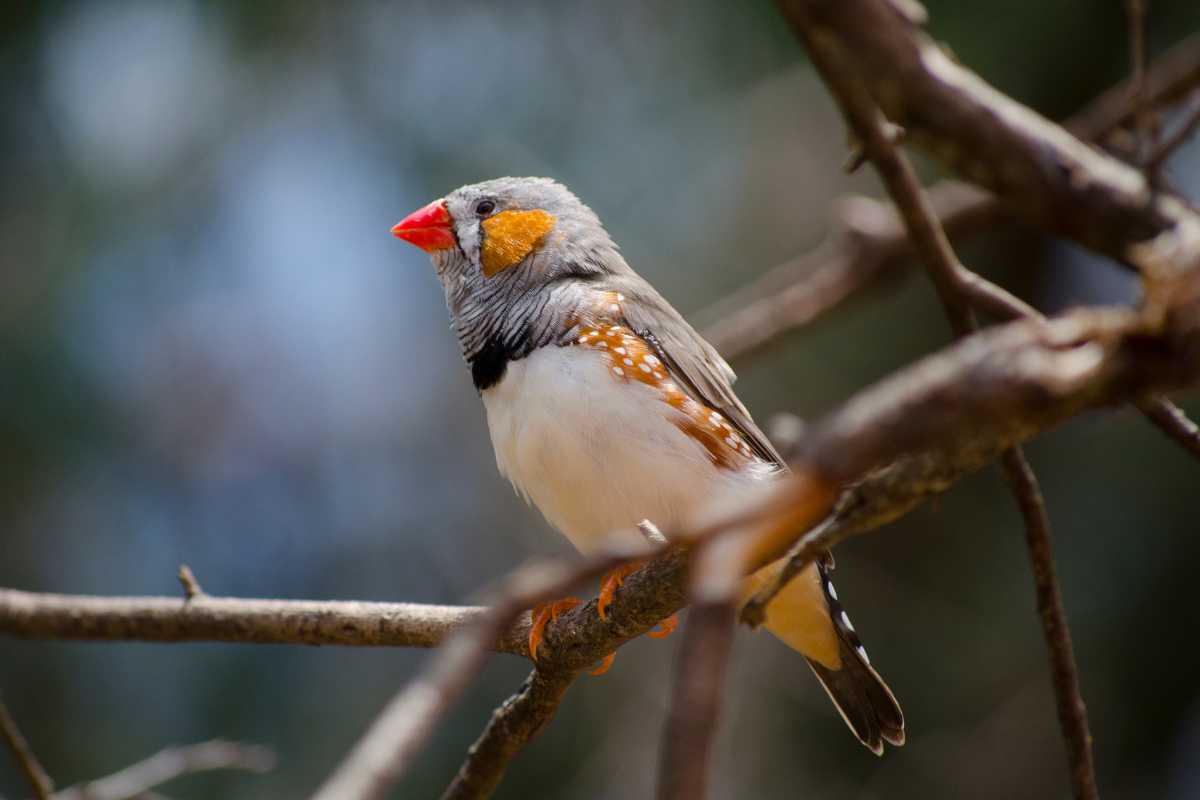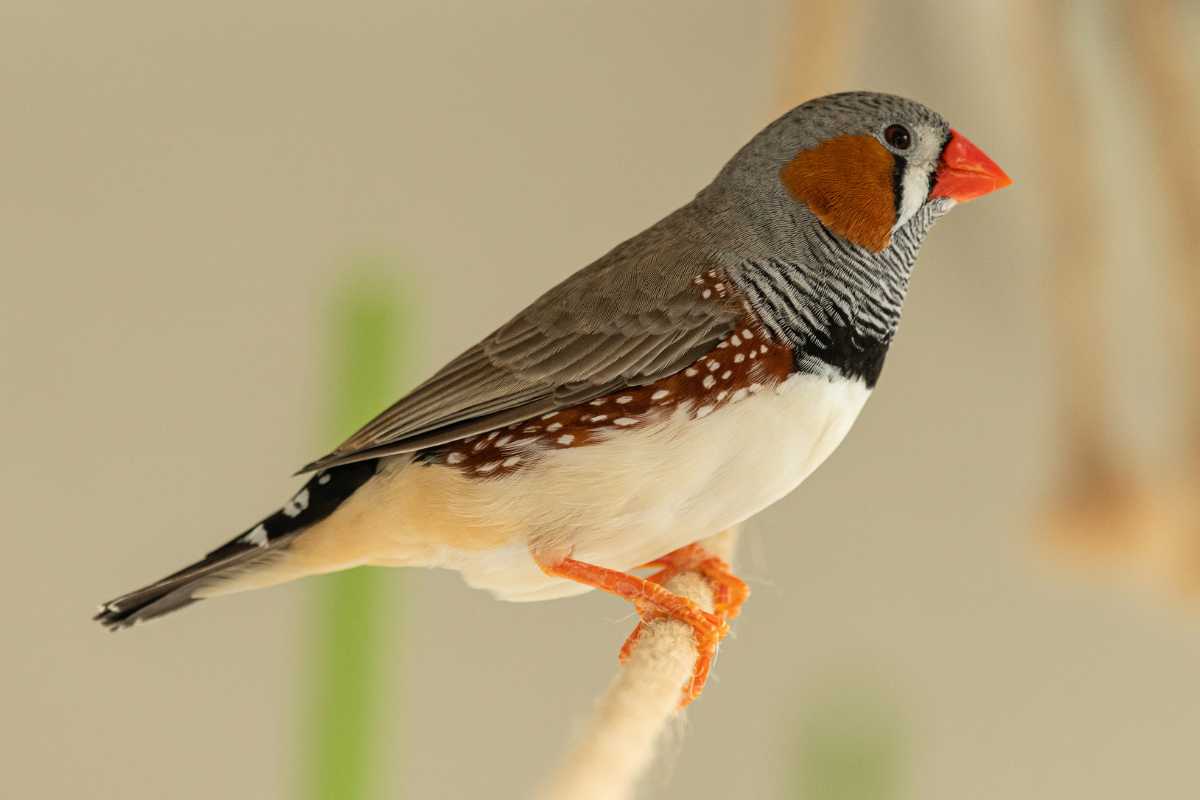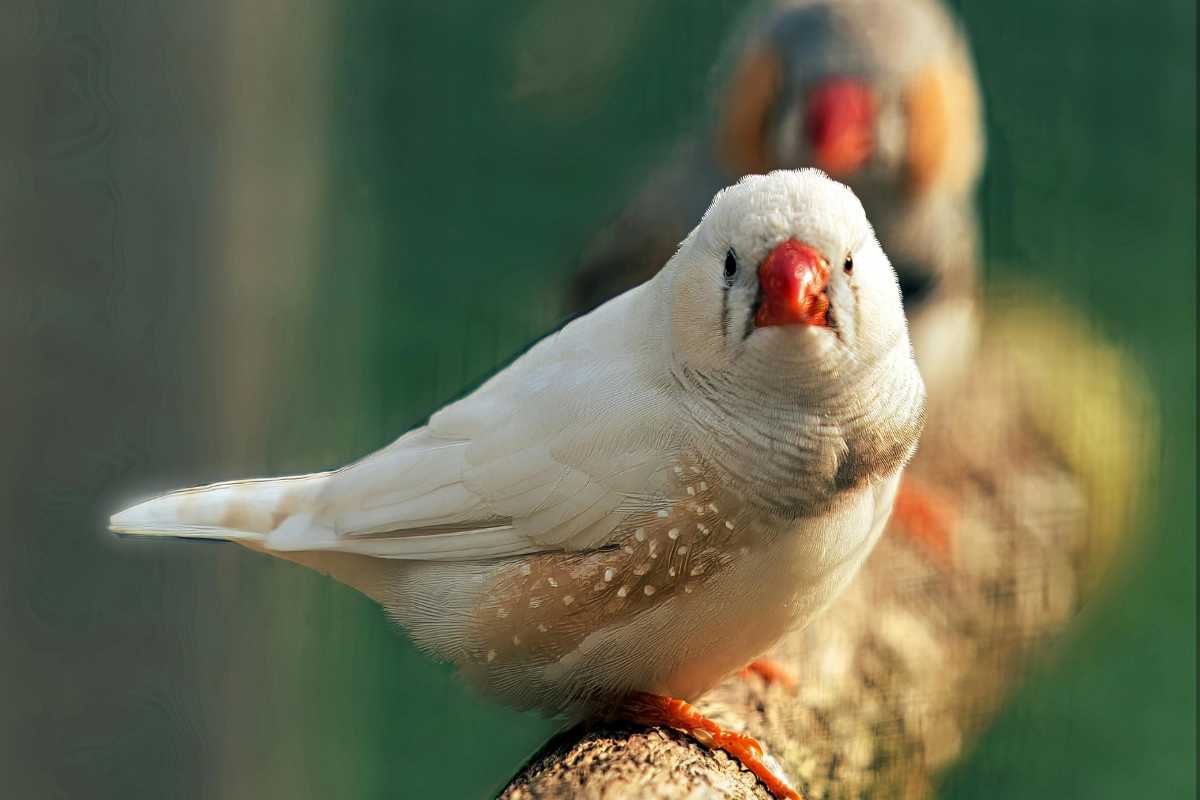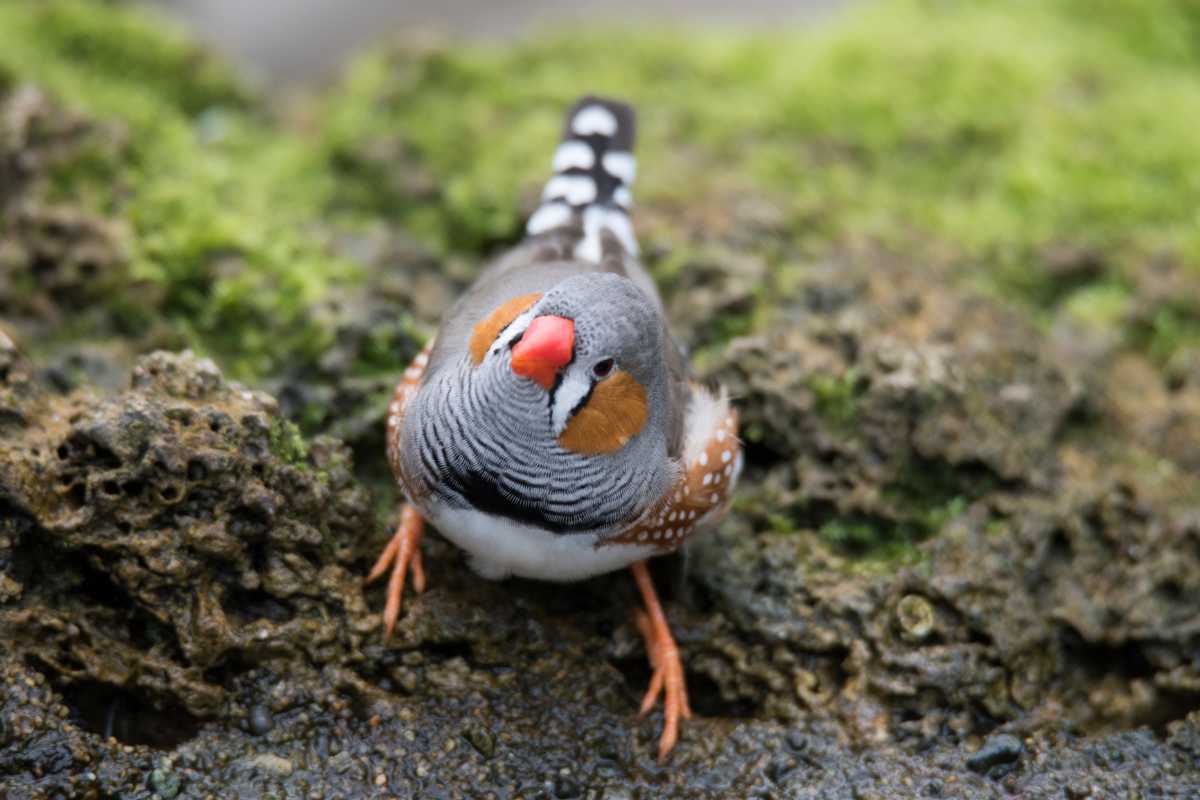Reasons Why you Should Get a Zebra Finch

If you’re looking for a cheerful, beginner-friendly bird that doesn’t demand constant handling, the zebra finch is a wonderful choice. These tiny Australians are lively observers, gifted singers, and loyal flockmates.
This guide brings together everything a new keeper needs to know—zebra finch care, realistic expectations, and setup tips—so you can decide with confidence whether this species fits your home and routine.
A Quick Snapshot of Zebra Finch Life

Zebra finches thrive when we respect what makes them unique: they are social, active flyers, and more enjoyable to watch than to handle.
Expect gentle, frequent beeps and songs rather than silence; think enrichment and space to move rather than cuddles.
With the right environment—clean habitat, balanced diet, and companionship—they repay you with busy, engaging behavior and soft music throughout the day.
What Makes Zebra Finches Great Companions

Gentle Sound That Works for Apartments
Worried about noise? You’ll find zebra finches vocal, but not overwhelming. Their songs are light, rhythmic, and generally apartment-friendly, adding a pleasant background rather than piercing calls.
If you work from home or prefer a peaceful atmosphere, their soft chatter feels lively without taking over the room. For searchers asking are zebra finches loud, the honest answer is: they’re chatty, not booming.
Low-Fuss Daily Routine (With Honest Boundaries)
Compared to larger parrots, zebra finches have a simpler daily routine: fresh food and water, quick spot cleaning, and a glance at behavior.
That said, “low maintenance” shouldn’t be mistaken for “no maintenance.” They still need adequate flight space, varied nutrition, and steady temperatures. A small time investment each day keeps them healthy and your home fresh.
Engaging to Watch, Not to Handle
Zebra finches don’t typically enjoy hand-taming. Their joy is in being themselves—foraging, preening, bathing, flying short sprints, and interacting as a pair or in a small group.
If you want a bird to perch on your shoulder, look elsewhere. If you love observing natural behavior and gentle song, this species is a delight.
What They Need to Thrive (Care Basics)

Cage Size and Setup That Prioritizes Flight
Short, wide, and open flight paths beat tall, narrow cages every time. For a pair, aim for a rectangular enclosure that’s at least 30 in (76 cm) wide with bar spacing around 1/4 in (0.6 cm) to keep them safe.
Bigger is always better; consider a small indoor aviary if you can. Equip the cage with:
Natural wood perches of varied diameters to support foot health.
A shallow bath or bath door cup several times a week—finches adore bathing.
Open space across the width for short flights; avoid cluttering the center.
Toys and foraging options that encourage movement (soft swings, millet holders, fresh safe greens clipped near a perch).
This is the heart of zebra finch cage size advice: give them room to move horizontally, and you’ll see calmer birds, better muscle tone, and more natural behavior.
Diet and Nutrition Beyond Seed Mixes

A seed-only diet is not enough. A strong zebra finch diet includes:
A quality finch seed mix as a base, refreshed daily.
Pellets made for finches (offered gradually) to improve micronutrient balance.
Fresh vegetables and dark leafy greens (e.g., romaine, dandelion, chard) several times per week.
Protein boosters in moderation (e.g., egg food) especially during molting or if advised by an avian vet.
Calcium sources like cuttlebone or a mineral block, always available.
Grit is controversial and not universally recommended for finches on balanced diets; ask an avian vet for guidance.
Clean, room-temperature water should be changed daily—more often in hot weather or after baths.
Social Needs: Always at Least a Pair
Zebra finches are flock birds. A single finch can become stressed and withdrawn; keep them in bonded pairs or small groups for emotional well-being.
If you don’t intend to breed, choose same-sex pairs or avoid nesting materials and nest boxes. Companionship supports steady singing, better appetite, and lower anxiety.
Cleaning and Routine That Keeps Everyone Comfortable
Plan for quick daily spot cleaning (papers, visible droppings, food hulls) and a weekly refresh of perches and accessories with a bird-safe cleaner or warm soapy water.
A tidy environment controls dust and smell while protecting your birds from bacteria. Gentle airflow and consistent temperatures (avoid drafts and direct heat) keep them comfortable year-round.
Lifespan, Health, and When to See a Vet

How Long Do Zebra Finches Live?
With good care, expect a zebra finch lifespan of 5–8 years on average, with a broader range of 3–10+ years depending on genetics, diet, and veterinary care.
Some individuals reach their early teens in optimal indoor aviaries, but that’s the exception rather than the rule.
Early Red Flags You Shouldn’t Ignore
Subtle behavior changes can be more telling than dramatic symptoms. Watch for:
Fluffed feathers and persistent lethargy
Labored or tail-bobbing breathing
Loss of appetite or sudden weight change
Wet or dirty vent feathers
Quiet, withdrawn birds that stop engaging with a mate or skip favorite foods
If you notice these signs, consult an avian veterinarian promptly. Early action matters for small birds.
Preventive Care That Pays Off
Weighing your finches weekly with a small gram scale helps you catch changes before they’re visible.
Rotate perches to prevent pressure sores, offer baths routinely, keep diet varied, and schedule annual wellness checks with an avian-experienced vet. Prevention is easier—and kinder—than treatment.
Real-World Costs: Setup and Monthly Budget

One-Time Setup
Expect to invest in a spacious cage, quality perches, dishes, toys, a cuttlebone/mineral block, and a travel carrier. If you opt for an indoor aviary, the initial cost is higher but often pays off in bird welfare and your long-term enjoyment.
Monthly Expenses
Budget for fresh seed and pellets, leafy greens, occasional egg food, bedding or cage liners, and toy rotation. Add a vet savings cushion so you can respond quickly if a health issue arises.
Zebra finches are relatively economical compared to larger parrots, but responsible care still has ongoing costs.
Responsible Considerations (The “Cons” to Weigh)

They Breed Easily—Even When You Didn’t Plan To
Mixed-sex pairs with access to nesting material will likely breed. If you don’t want chicks, avoid nest boxes, don’t provide nesting fibers, and keep same-sex pairs.
If eggs appear unexpectedly, seek avian vet or reputable breeder guidance on safe, humane management.
Not a Hand-Tame Species
For many keepers this is a feature, not a bug. Still, it’s important to set expectations: zebra finches are not cuddly. Their value is in natural, flock-centered behavior and the calm joy of observation.
There Will Be Some Mess
Seed hulls scatter; bath splashes happen. A seed guard, smart cage placement, and regular quick cleans keep things under control. If you’re prepared for light, frequent tidying, it’s very manageable.
Getting Started: A Simple First-Week Plan

Day 1, let your new pair settle with minimal disturbance and soft lighting. Keep the cage in a quiet, stable-temperature room away from the kitchen.
In the first few days, offer the same seed mix they were eating before, then gradually introduce pellets and greens. Hang a cuttlebone, provide fresh water twice daily, and offer a shallow bath every other day.
Speak softly when you approach, moving slowly and predictably. By week’s end, you’ll start seeing regular song, active foraging, and relaxed preening—great signs that you’ve set the stage well.
Smart Enrichment That Doesn’t Overwhelm

Because zebra finches are small and high-energy, enrichment should be simple and purposeful. Rotate two or three lightweight toys rather than crowding the cage.
Try a braided grass swing, a millet clip placed to encourage short flights, or a safe bundle of fresh greens near a perch for natural foraging. Keep new items for a few days at a time to build familiarity before rotating.
Common Questions, Answered Briefly
Do They Need Sunlight?
They need light cycles, not direct midday sun. Place the cage where they get natural daylight rhythm without overheating.
If natural cues are poor, consider a full-spectrum light on a timer (12–14 hours of light, season-appropriate) placed outside the cage and positioned safely.
Can They Live With Other Small Birds?
Mixed species aviaries are possible for experienced keepers with the space to reduce conflict, but beginners do best with a zebra finch-only setup. Safety first: different species have different needs and temperaments.
What If One Bird Passes Away?
Because they’re social, a solitary finch may struggle. When appropriate, introduce a new same-sex companion after a quarantine period and with careful monitoring.
Is a Zebra Finch Right for You?

Choose zebra finches if you want gentle song, lively behavior, and low-fuss daily care—and you’re happy to observe rather than handle.
Provide a generous horizontal cage, a balanced diet beyond seeds, and companionship, and these petite birds will reward you with years of subtle music and endearing routines.
If you’re unsure about space or you prefer hands-on bonding, consider researching other species first.
Bottom Line for New Keepers
Zebra finches shine when we meet their real needs, not a sales pitch.
With adequate flight room, social housing, and consistent, varied nutrition, they’re among the most beginner-friendly birds you can keep—engaging, economical, and genuinely soothing to live with.
Before you bring a pair home, review zebra finch care essentials, double-check your zebra finch cage size, and plan a simple cleaning routine you can stick to.
Do that, and your home will soon feel brighter with soft song and small, joyful motion.



You may also like